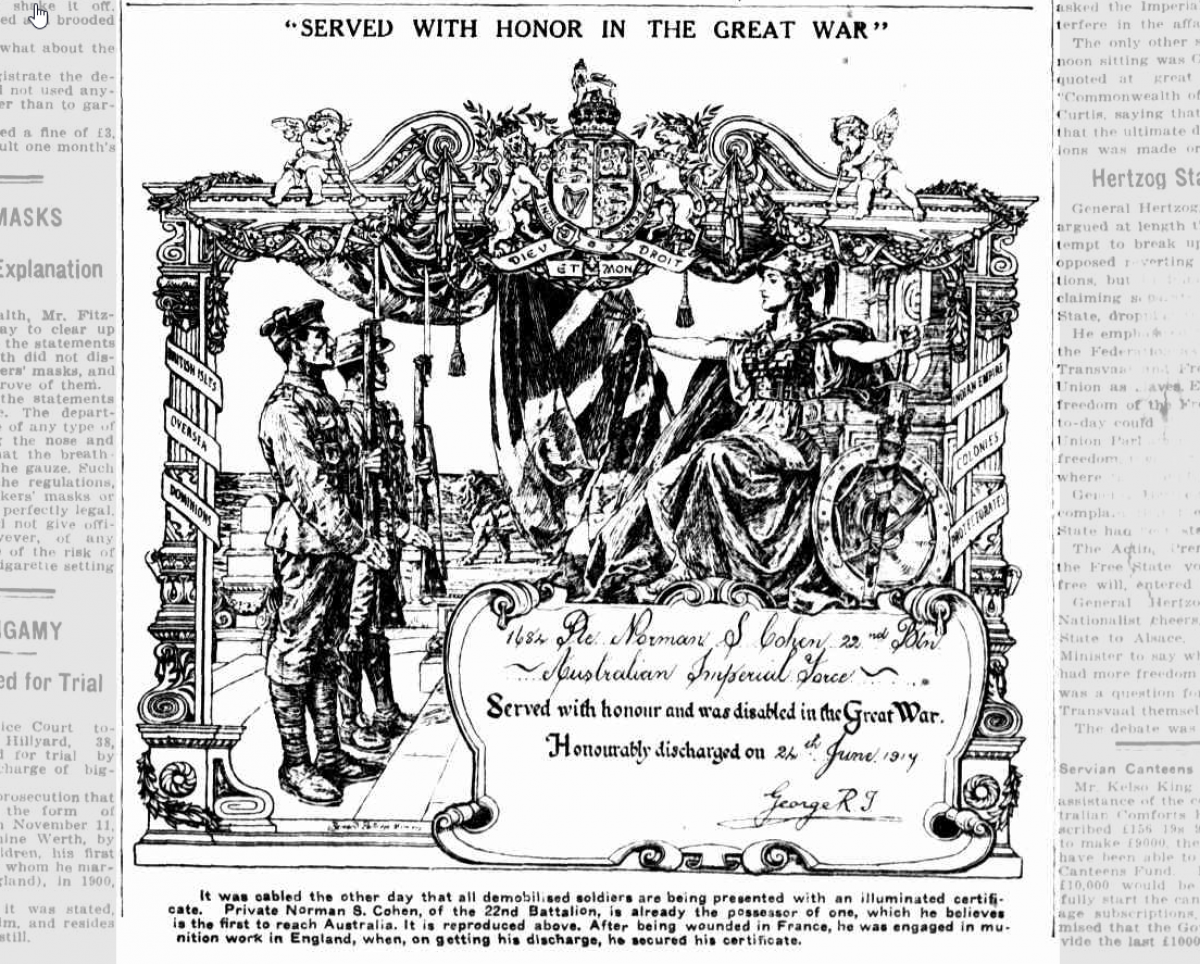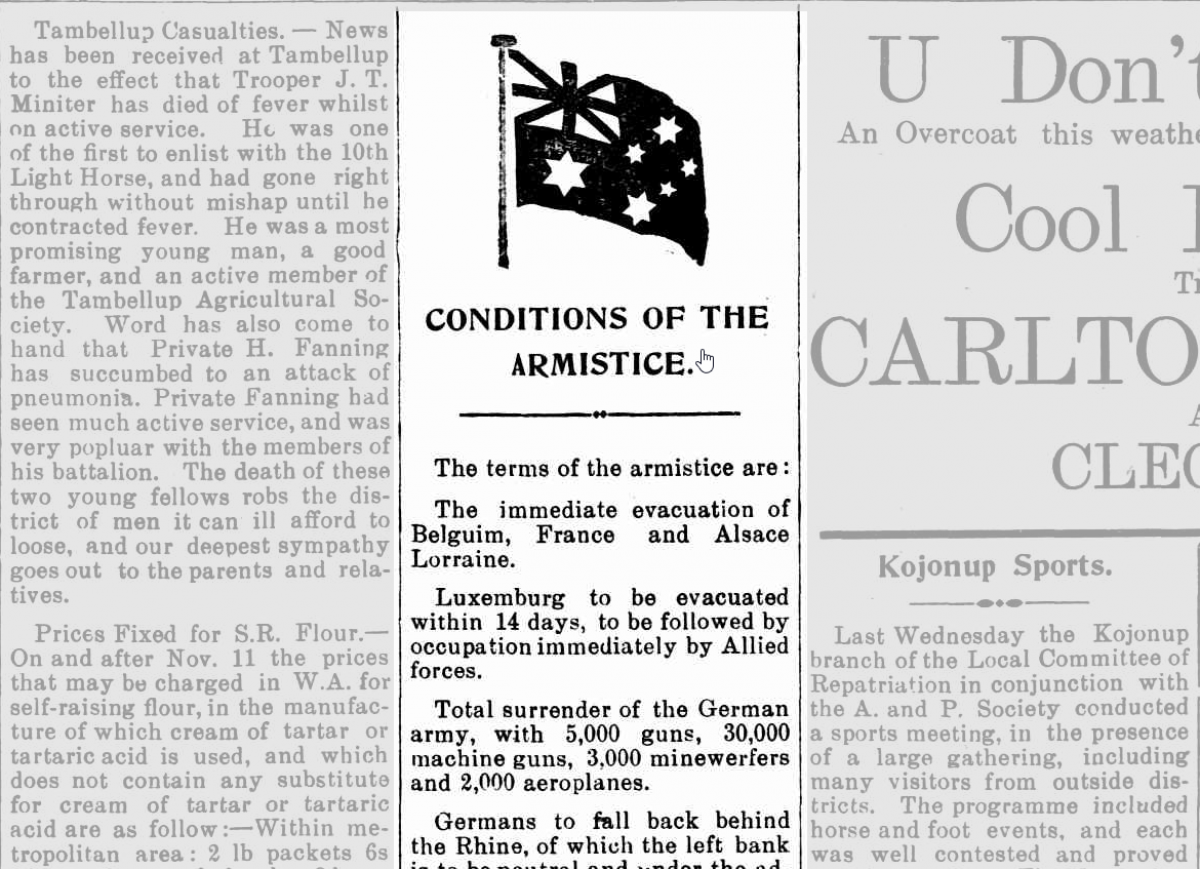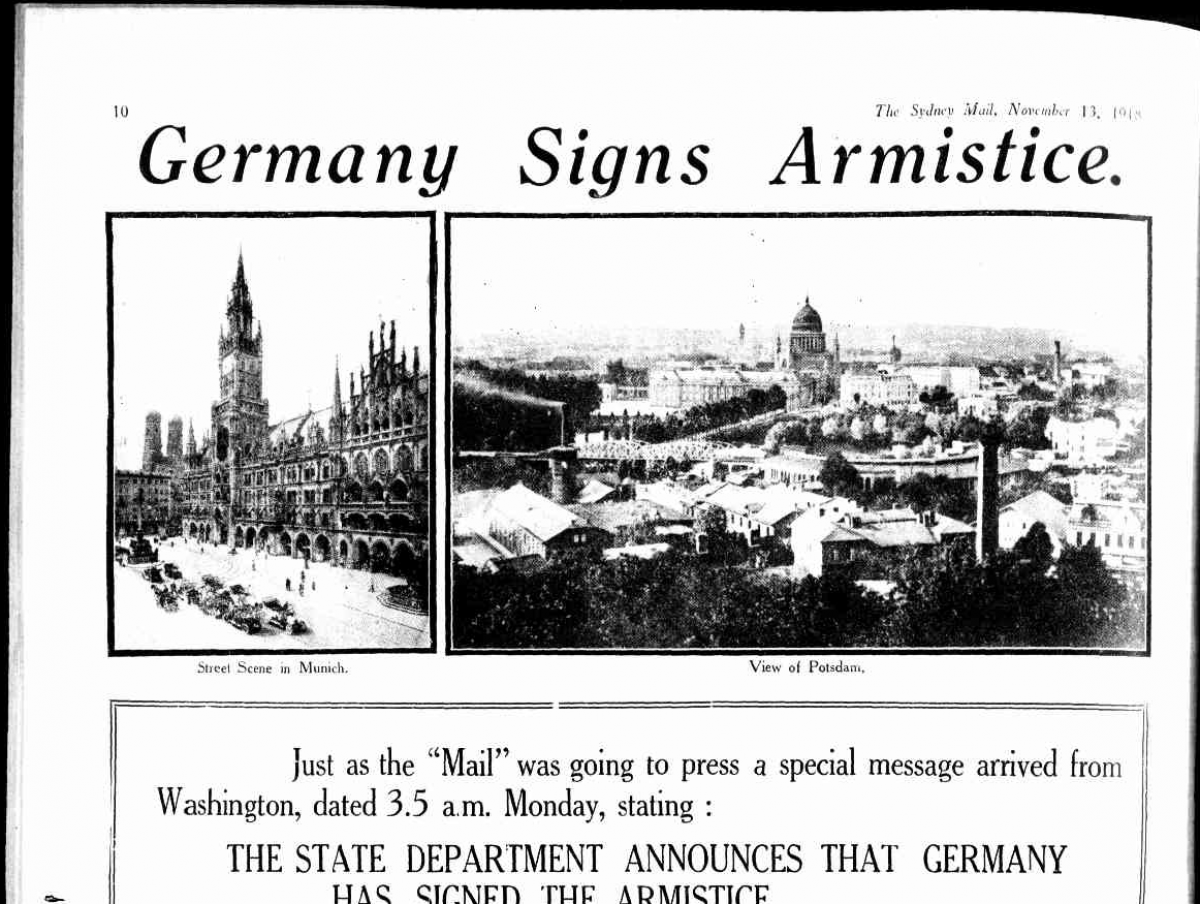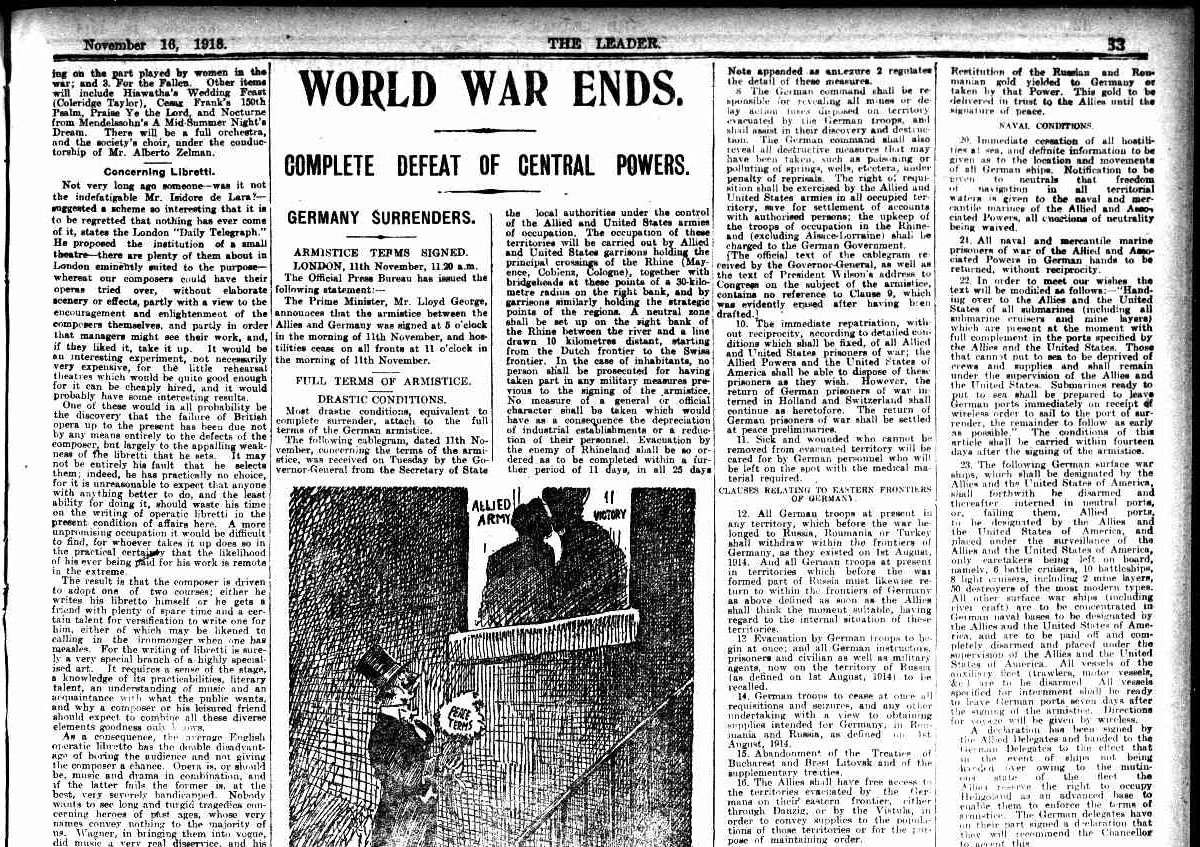Battles of a Hundred Days—Western Front (August–November 1918)

(1919, January 6). The Argus (Melbourne, Vic. : 1848 - 1957), p. 5 (The Argus War Review). http://nla.gov.au/nla.news-page402797
Armistice, 11 November 1918
By late 1918, the Allied forces had won a series of key battles that forced the German troops into retreat. The Central powers quickly began to collapse, with Turkey signing an armistice in late October and Austria–Hungary following within a week. By early November, the British finally broke through the German lines, taking 20,000 prisoners and a large number of guns. Now lacking labour and supplies, Germany was forced to enter into peace negotiations or face possible invasion.
The armistice was signed at 5am on 11 November 1918 and came into effect six hours later, at 11am. This was followed up six months later by the official signing of the Treaty of Versailles between France, Britain and Germany. The terms of the armistice were not only designed to end the fighting on the battlefields, but to prevent Germany from restarting the war in the immediate future. In order to restrict its powers, it was ordered to surrender large quantities of guns, aircraft and submarines to the Allied forces. The consequence of failing to meet any of the terms of the armistice meant war could recommence within 48 hours.
Over the course of World War I, 295,000 Australians served on the front line. The lengthy four-year war cost 62,000 Australian lives and over 132,000 were wounded.
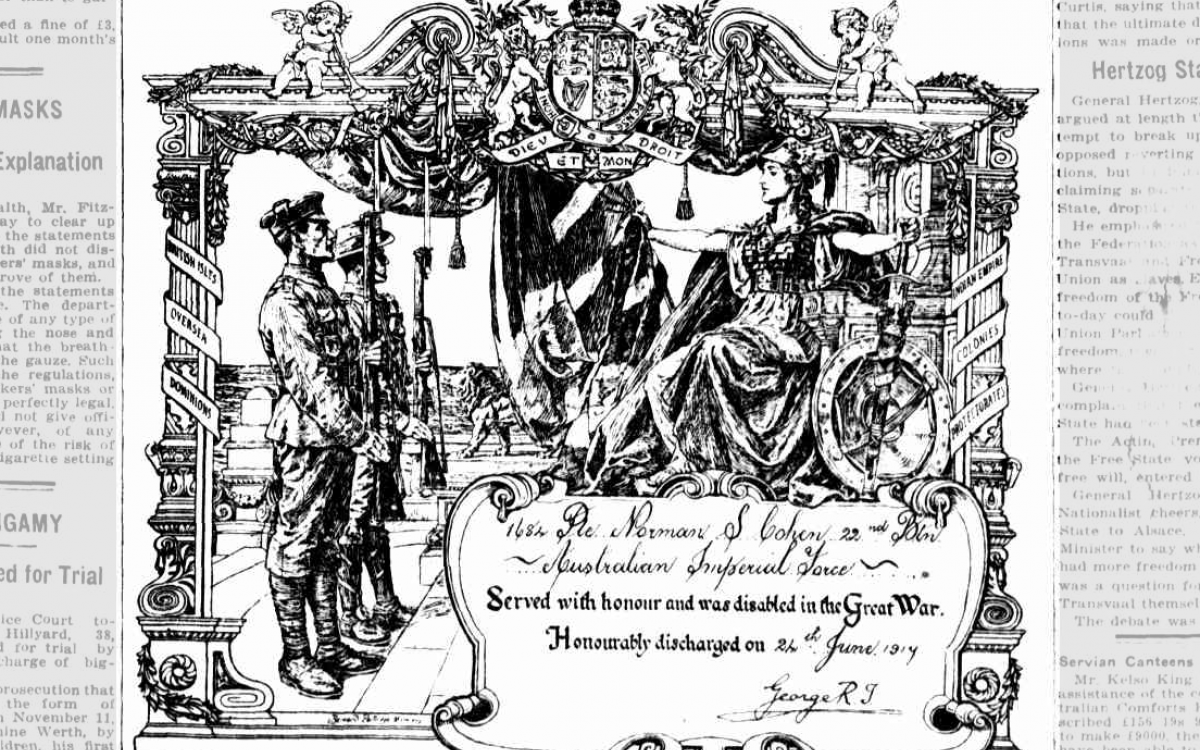
"SERVED WITH HONOR IN THE GREAT WAR" (1919, February 13). The Sun (Sydney, NSW : 1910 - 1954), p. 7 (FINAL EXTRA). http://nla.gov.au/nla.news-article222640598
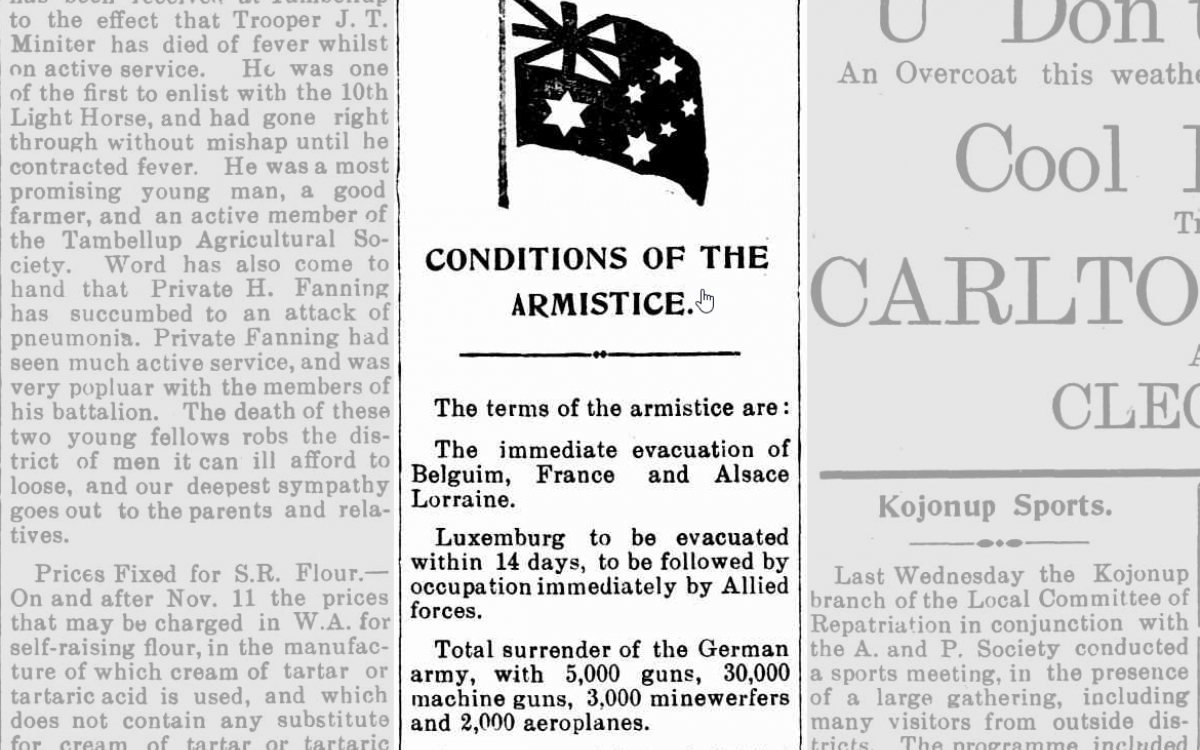
CONDITIONS OF THE ARMISTICE. (1918, November 13). The Southern Districts Advocate (Katanning, WA : 1913 - 1936), p. 2. http://nla.gov.au/nla.news-article216804845
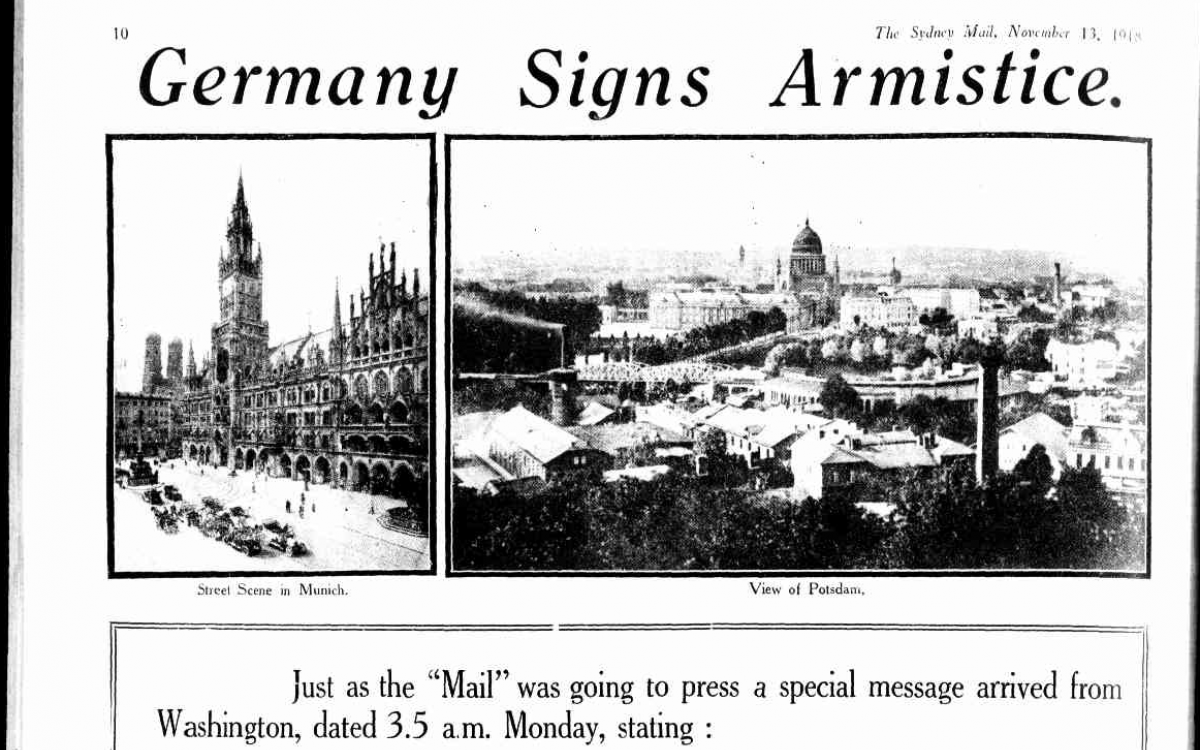
(1918, November 13). Sydney Mail (NSW : 1912 - 1938), p. 10. http://nla.gov.au/nla.news-page16892953
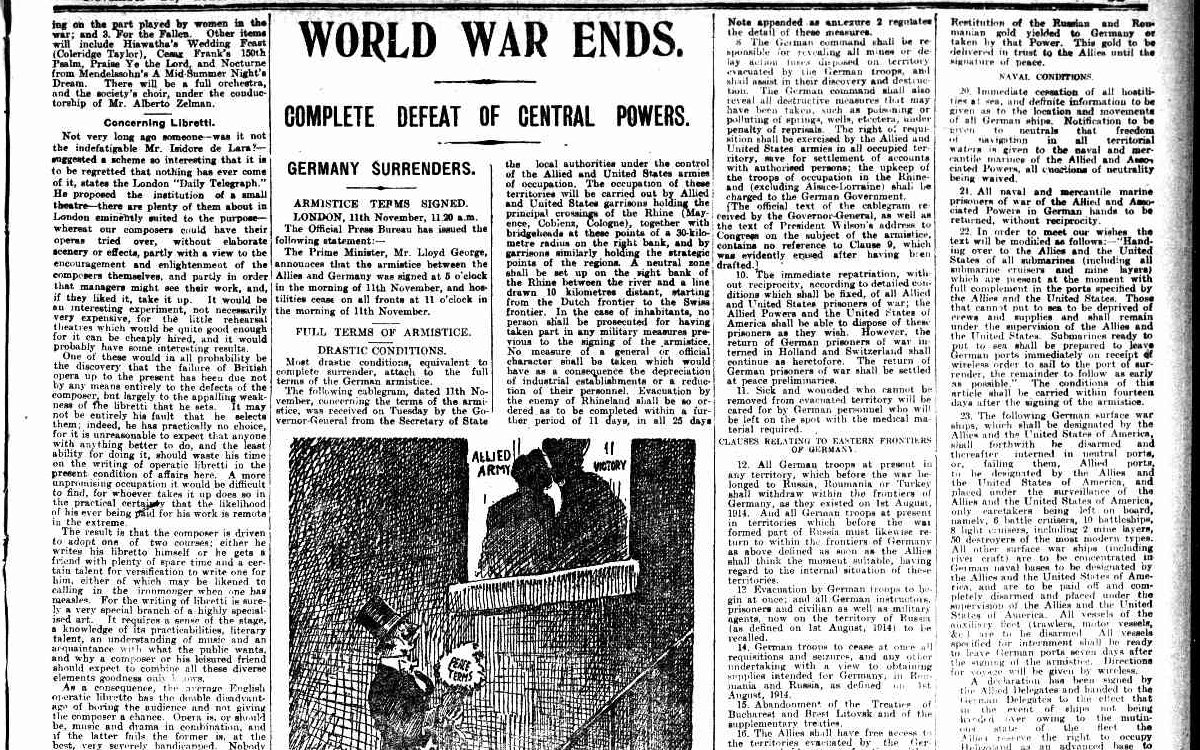
(1918, November 16). Leader (Melbourne, Vic. : 1862 - 1918, 1935), p. 33 (TOWN EDITION.). http://nla.gov.au/nla.news-page8546525
Significant Battles
Hazebrouck (12–15 April 1918)
Battle of Amiens (8 August 1918)
Second Battle of Villers-Bretonneux (24–26 April 1918)
Battle of Hamel (4 July 1918)
Battle of Mont St Quentin (31 August–3 September 1918)
Battle of St Quentin Canal (29 September–10 October 1918)
Battle of Montbrehain (5 October 1918)

